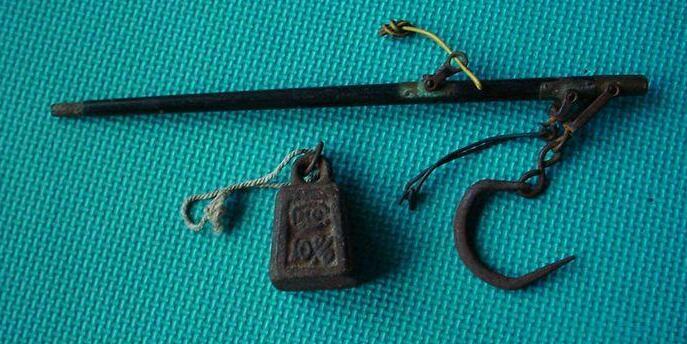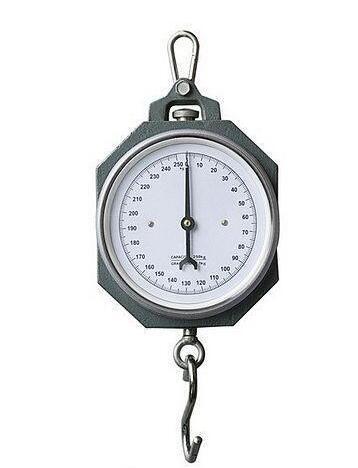22
2023
-
05
How to read the scale
Scale cheng shape sound. The word Conghe, Congping. "Ping" means "repression" and "repression". "He" means "grain". The combination of "he" and "ping" means "press down the five grains". The scale is also called "weighing". scales. Or the instrument for measuring weight with unequal arms is called a scale, or it refers to a lift-tie bar scale for weighing with a scale star gauge, or a single-finger scale bar. In the Warring States Period, there were scale scales. When the domestic steelyard began, there is no conclusion yet. The copper balance pole unearthed by the King of Chu has ten equal scales on it. It is speculated that it is used as a sign of hanging weights and heavy objects at different parts during weighing. After the Eastern Han Dynasty, it evolved into a scale that looked at the weight from the stars of the scale.
How to read the scale
Steelyard
platform scale
case scale
spring balance
How to read the scale
Scale cheng shape sound. The word Conghe, Congping. "Ping" means "repression" and "repression". "He" means "grain". The combination of "he" and "ping" means "press down the five grains".
The scale is also called "weighing". scales. Or the instrument for measuring weight with unequal arms is called a scale, or it refers to a lift-tie bar scale for weighing with a scale star gauge, or a single-finger scale bar. In the Warring States Period, there were scale scales. When the domestic steelyard began, there is no conclusion yet. The copper balance pole unearthed by the King of Chu has ten equal scales on it. It is speculated that it is used as a sign of hanging weights and heavy objects at different parts during weighing. After the Eastern Han Dynasty, it evolved into a scale that looked at the weight from the stars of the scale.
Steelyard
A small weighing instrument with a wooden or metal pole with a star point and a taper as the main body, equipped with a weight (weight), a weight rope, and a weighing pan (or weighing hook). According to the scope of use and the size of the scale, it can be divided into three types: pan scale and hook scale. The steelyard is a kind of first-arm lever, which is a simple weighing instrument that uses the principle of lever balance. It is composed of wood with a scale star and a lifting rope.
Steelyards consist of levers of the first type, centered mainly at the outer ends of the fulcrum. When weighing, according to the weight of the object being weighed, the hammer and hammer are moved on the beam to maintain balance. According to the star point on the scale beam corresponding to the hammer rope during balance, the quality indication value of the weighing object can be read out. The steelyard is simple in structure, light in weight, easy to carry and use, low in cost, but low in precision.
The steelyard is one of the oldest kinds of weighing instruments invented by human beings. In the cultural relics of Chu tombs unearthed in 700 BC in the eastern suburbs of Changsha, Hunan, China, there are various refined weights, scale beams, weighing pans, weighing pan wires, and lifting ropes.
Among the cultural relics unearthed from the Han Dynasty tombs in 200 BC, there are already scales of various specifications. In 1984, in a single-kiln brick tomb of the Han Dynasty in Yaoshang Village, Changxing Town, Meixian County, Shaanxi Province, China, a complete wooden steelyard relic was found, dating from the 1st to 1st century BC.

platform scale
Lever type mechanical scale weighing from 50 kg to 1000 kg. The load bearing device is a rectangular table top, usually used on the ground. According to the structural principle, it can be divided into mechanical platform scales and electronic platform scales.
Mechanical platform scale: works on the principle of unequal arm lever. It consists of load bearing means, readout means, basic levers and scales.
The reading device includes increasing mound, mound hanging, metering lever and so on. The grass-roots levers are connected side by side by long levers and short levers. The force transmission system during weighing is that when the object to be weighed is placed on the load-bearing plate, the four component forces act on the key knife of the long and short levers, and the force point knife and connecting hook of the long lever transmit the force to the key knife of the measuring lever . By manually adding, subtracting and moving weights to bring the metering levers into balance, an indication of the so-called mass of the object is obtained.
The mechanical platform scale is simple in structure and accurate in measurement. It can be placed and used as long as there is a flat and firm scale frame or ground.
case scale
Lever-type mechanical scales weighing less than 50 kg (excluding 50 kg). According to its structure and function, it can be divided into ordinary case scales and electronic pricing scales.
Common case scale: consists of a base, a bracket, a connecting rod, a knife holder, a regulator, a load-bearing plate, a swimmer, a scale and a weight booster. The structure is relatively simple.
Common case scales are designed and manufactured using the principle of unequal arm levers and a half-side Roberville mechanism. Its bearing plate is located above the metering lever, and because the center of gravity is higher than the support, instability occurs. Therefore, the Roberville mechanism is composed of connecting rods, pull plates and adjustment plates and is utilized.
The compound lever of double fulcrum and double point can increase the support area, so as to ensure that the load-bearing plate only swings up and down when weighing, and does not fall forward, backward, left or right. The use of the mechanism overcomes the disadvantages that the hanging weighing tool needs to be carried and the balance of the scale is constantly shaken, which affects the balance of the scale.
The advantages of ordinary case scales are: ①The load-bearing plate can be made into a flat plate type or a movable disc type, which is convenient to take down and use as a container when weighing. ②The relationship between the weight P, the so-called material quality W and the length of the lever arm is: that is, when an object with a mass of 5kg is placed on the load-bearing plate, you only need to put the weight with a mass of 1kg on the weight plate to make it The scale is in balance. The maximum weighing capacity is 1kg, 3kg, 6kg and 15kg, and the corresponding models are AGT-1, AGT-3, AGT-6, AGT-15. This kind of scale is accurate, durable, and easy to use and maintain, so it is widely used.
spring balance
The weight of the object is measured by the deformation of the spring under the gravity of the object to be measured. Its scale can be from 1 mg to tens of scales
Ton. Using the spring stretching load scale, it can be divided into single-sided display and double-sided display. Spring balance, also known as spring dynamometer, is a device that measures spring deformation proportional to external force. At different latitudes of the earth, the mass of the same object measured by the same spring balance will be different.
There are two types of spring balances: compression and tension. The pressure on the spring scale tray is equal to the gravity of the object, and the rotation angle of the scale pointer indicates the pressure value. The lower end of tension spring balance is connected with hook (this hook is connected with spring lower end), spring balance.
The upper end is fixed on the ring on the top of the shell. Hang the measured object on the hook, the spring stretches, and the pointer fixed on the spring descends. Within the elastic limit, the elongation of the spring is proportional to the external force received, so the magnitude of the force and the gravity of the object can be read directly from the degree value of the housing indicated by the pointer of the spring balance. When using, it should be noted that the measured gravity or force should not exceed the measurement range of the spring scale. Also check that the needle points to the zero mark when there is no object hanging from the spring scale. If it's not zero scale, it can be corrected. Before hanging anything, it is best to gently pull the hook back and forth a few times to prevent the spring pointer from getting stuck on the case. In addition, care should be taken not to make the spring and pointer rub against the shell, so as to avoid excessive error.
loader electronic scale
The loader electronic scale is a measurement device that combines the user's need to weigh and load bulk materials in practical applications. It can be used for vehicle loading measurement, load limit measurement and earthwork measurement. It consists of a sensor and a weighing indicator, which can be measured dynamically or statically. The weighing instrument can print date, time, tare, zero, store weight data and information and other functions. working principle:
Loader electronic scale is a kind of loader weighing equipment, which integrates the mechanical control components of the loader, and realizes weighing during the driving process of the loader. The predetermined weighing position is monitored by the proximity switch, and the hydraulic pressure is converted into the weight of the load in the bucket to realize weighing. It has two different working modes: target mode and accumulation mode. Depending on the operator's choice, the load can be automatically accumulated or deducted from the target setpoint.
Components: one weighing instrument, two oil pressure sensors, one position sensor, four installation modules.

Related News
Guilin Guiqiang Machinery Co.
Address:No.2, Pailou New District, Lingchuan, Guilin
Mobile Number : +8613517860005 Mr. Tian
Landline:+86-0773-6819921
E-mail:3369423711@qq.com

Public

Mobile Station










